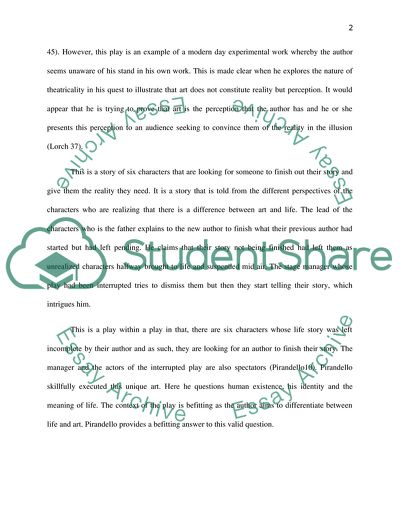Cite this document
(Pirandellos Six Characters in Search of an Author Essay Example | Topics and Well Written Essays - 2000 words, n.d.)
Pirandellos Six Characters in Search of an Author Essay Example | Topics and Well Written Essays - 2000 words. https://studentshare.org/philosophy/1821930-six-characters-in-search-of-an-author
Pirandellos Six Characters in Search of an Author Essay Example | Topics and Well Written Essays - 2000 words. https://studentshare.org/philosophy/1821930-six-characters-in-search-of-an-author
(Pirandellos Six Characters in Search of an Author Essay Example | Topics and Well Written Essays - 2000 Words)
Pirandellos Six Characters in Search of an Author Essay Example | Topics and Well Written Essays - 2000 Words. https://studentshare.org/philosophy/1821930-six-characters-in-search-of-an-author.
Pirandellos Six Characters in Search of an Author Essay Example | Topics and Well Written Essays - 2000 Words. https://studentshare.org/philosophy/1821930-six-characters-in-search-of-an-author.
“Pirandellos Six Characters in Search of an Author Essay Example | Topics and Well Written Essays - 2000 Words”. https://studentshare.org/philosophy/1821930-six-characters-in-search-of-an-author.


